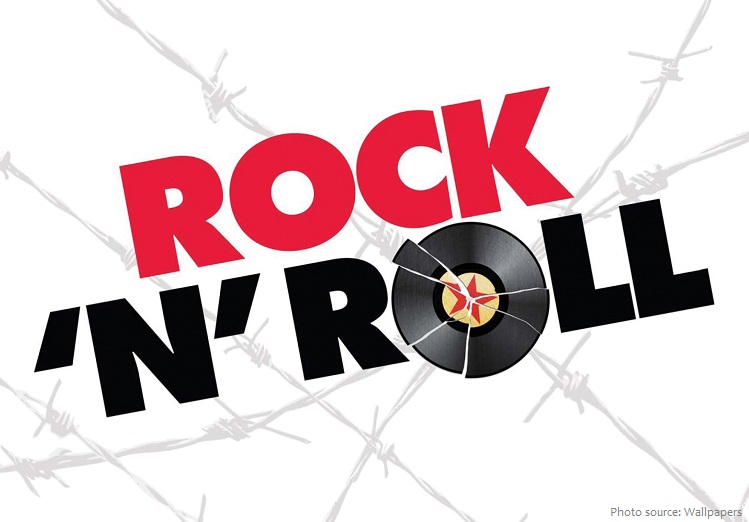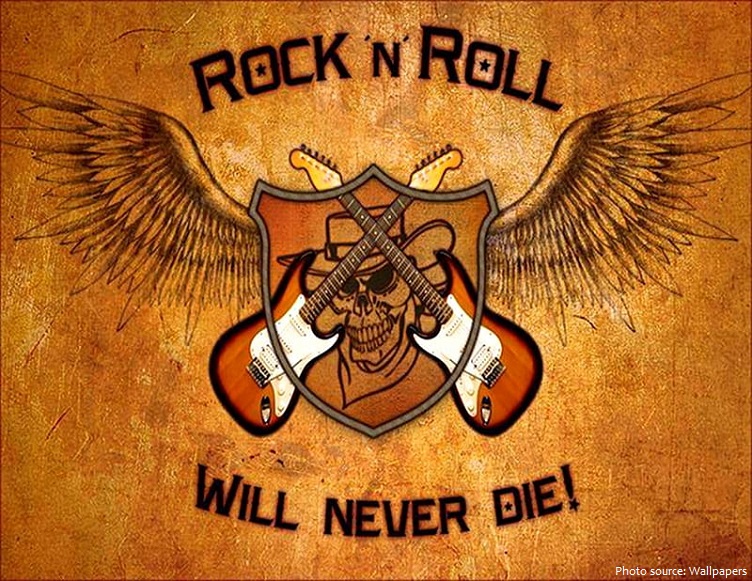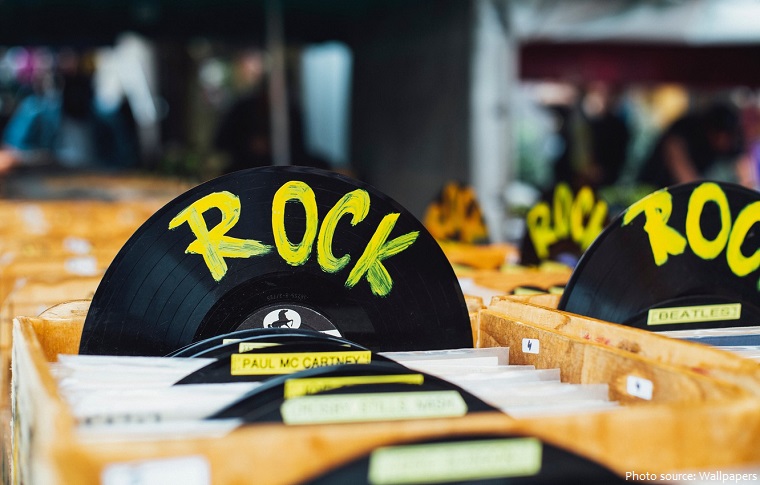
Rock and roll also called rock ‘n’ roll and rock & roll is a genre of popular music that evolved in then United States during the late 1940s and early 1950s.
It derived most directly from the rhythm and blues music of the 1940s, which itself developed from earlier blues, the beat-heavy jump blues, boogie woogie, up-tempo jazz, and swing music. It was also influenced by gospel, country and western, and traditional folk music. Rock and roll in turn provided the main basis for the music that, since the mid-1960s, has been generally known simply as rock music.
In the earliest rock and roll styles, either the piano or saxophone was typically the lead instrument. These instruments were generally replaced or supplemented by guitar in the middle to late 1950s. The beat is essentially a dance rhythm with an accentuated backbeat, almost always provided by a snare drum. Classic rock and roll is usually played with one or two electric guitars (one lead, one rhythm) and a double bass (string bass). After the mid-1950s, electric bass guitars (“Fender bass”) and drum kits became popular in classic rock.

Disk Jockeys such as Alan Freed in Cleveland Ohio, Dewey Phillips in Memphis Tennessee, and William ‘Hoss’ Allen in Nashville, Tennessee were the first to give Rock and Roll music airtime. Through radio, white teenagers were able to experience Rock and Roll music for the first time with bands such as the Dominos and the Spaniels in the early 1950s. The music was more exotic, interesting, and had a faster beat than anything they had experienced with music before.
Then in 1954, the sound of Rock and Roll music received a look to match the sound with the introduction of Elvis Presley. Elvis was a young, handsome white singer that had the soul and traditional sound of black singers. Elvis’ performance on the Ed Sullivan Television show on September 9, 1956 increased the popularity of Rock and Roll. Other artists such as Chuck Berry, Little Richard, and Jerry Lee Lewis also made huge impacts on Rock and Roll music.

In 1960s, the sound and look of Rock and Roll changed almost overnight with the British Invasion. The British Invasion is the term used to describe the decade of Rock and Roll when the airwaves were filled with bands from Britain. Their sound was fresh, exotic, and foreign, and their appearance consisted of long shaggy hair. This threw the youth of America into a tailspin. The leaders of the British Invasion were, without any dispute, The Beatles. The Beatles first appeared on the American charts with their hit, “Please Please Me.’
From its early 1950s beginnings through the early 1960s, rock and roll spawned new dance crazes including the twist. Teenagers found the syncopated backbeat rhythm especially suited to reviving Big Band-era jitterbug dancing. Sock hops, school and church gym dances, and home basement dance parties became the rage, and American teens watched Dick Clark’s American Bandstand to keep up on the latest dance and fashion styles. From the mid-1960s on, as “rock and roll” was rebranded as “rock,” later dance genres followed, leading to funk, disco, house, techno, and hip hop.

The phrase “rocking and rolling” originally described the movement of a ship on the ocean, but it was used by the early 20th century, both to describe a spiritual fervor and as a sexual analogy. Various gospel, blues and swing recordings used the phrase before it became used more frequently – but still intermittently – in the late 1930s and 1940s, principally on recordings and in reviews of what became known as “rhythm and blues” music aimed at black audiences. In May 1942, long before the concept of rock and roll had been defined, a Billboard record review described Sister Rosetta Tharpe’s vocals on the upbeat blues song “Rock Me”, by Lucky Millinder, as “rock-and-roll spiritual singing”.
The identity of the first rock and roll record is one of the most enduring subjects of debate among rock historians. Various recordings dating back to the 1940s and 1950s have been cited as the first rock and roll record. A number of sources have considered the first to be “Rocket 88”, which was recorded in 1951 by Ike Turner’s band, but credited to his saxophonist and the song’s vocalist Jackie Brenston. Turner led the band but provided no vocals for “Rocket 88”. The identity of the writer of the song remains in dispute. Brenston said that “they had simply borrowed from another jump blues about an automobile, Jimmy Liggins’ ‘Cadillac Boogie'”. Turner continued to maintain that he wrote the music and that he and the band jointly wrote the lyrics.

Rock and roll influenced lifestyles, fashion, attitudes, and language. In addition, rock and roll may have contributed to the civil rights movement because both African-American and white American teens enjoyed the music.
Many early rock and roll songs dealt with issues of cars, school, dating, and clothing. The lyrics of rock and roll songs described events and conflicts to which most listeners could relate through personal experience. Topics such as sex that had generally been considered taboo began to appear in rock and roll lyrics. This new music tried to break boundaries and express emotions that people were actually feeling but had not discussed openly. An awakening began to take place in American youth culture.